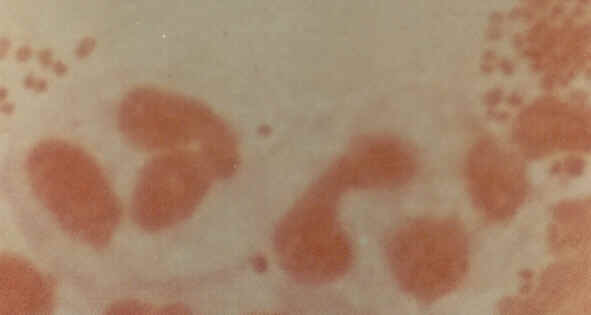 |
Paediatric Ophthalmology: Case four
 |
A four-day old baby was referred to the eye casualty because of a purulent discharge from his right eye. A conjunctival swab was taken and sent for microbiology study.a. What does the slide show?
Gram staining of the conjunctiva shows multiple Gram negative diplococci.
b. What is the diagnosis?Ophthalmia neonatorum due to Nesseria gonorrhoea.Ophthalmia neonatorum is defined as any purulent ocular discharge during the first 28 days of life. In the UK, its incidence is about 8 to 12% of live births. Nesseria gonorrhoea is uncommon in the UK but failure of diagnosis can lead to blindness due to corneal perforation.
c. How would you treat this condition?Systemic treatment is essential in the treatment of gonoccal keratoconjunctivitis in neonates. Benzyl penicillin given intravenously was very effective until the emergence of penicillin-resistant strains. To cover such strains, beta-lactamase stable cephalosporins such as ceftriaxone can be given 20-40mg/kg intravenously 12 hourly for 3 days combined with topical saline lavage and antibiotic ointment such as gentamicin ointment.As the baby acquires the infection from the birth canal. The mother should also be referred to the STD clinic (sexually transmitted disease) for treatment.
Click here for the questions Click here for the main page Click here for FRCOphth/MRCOphth
/FRCS tutorials